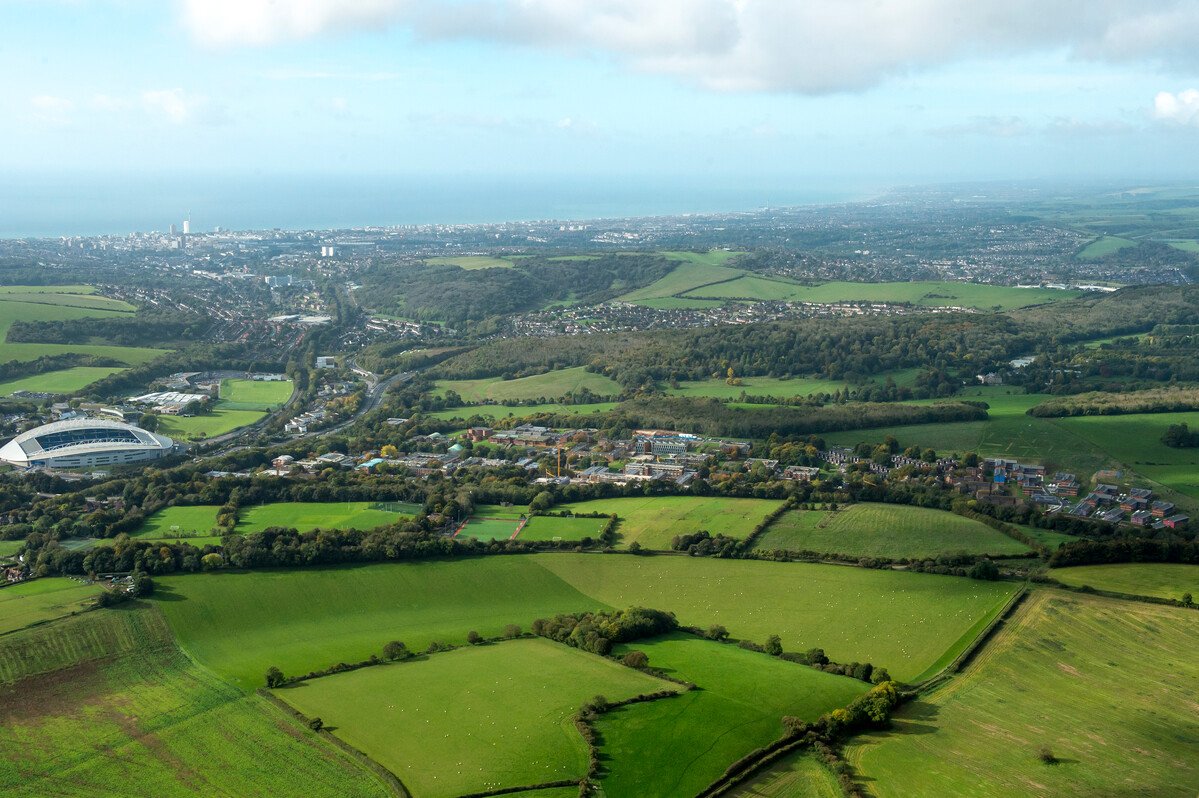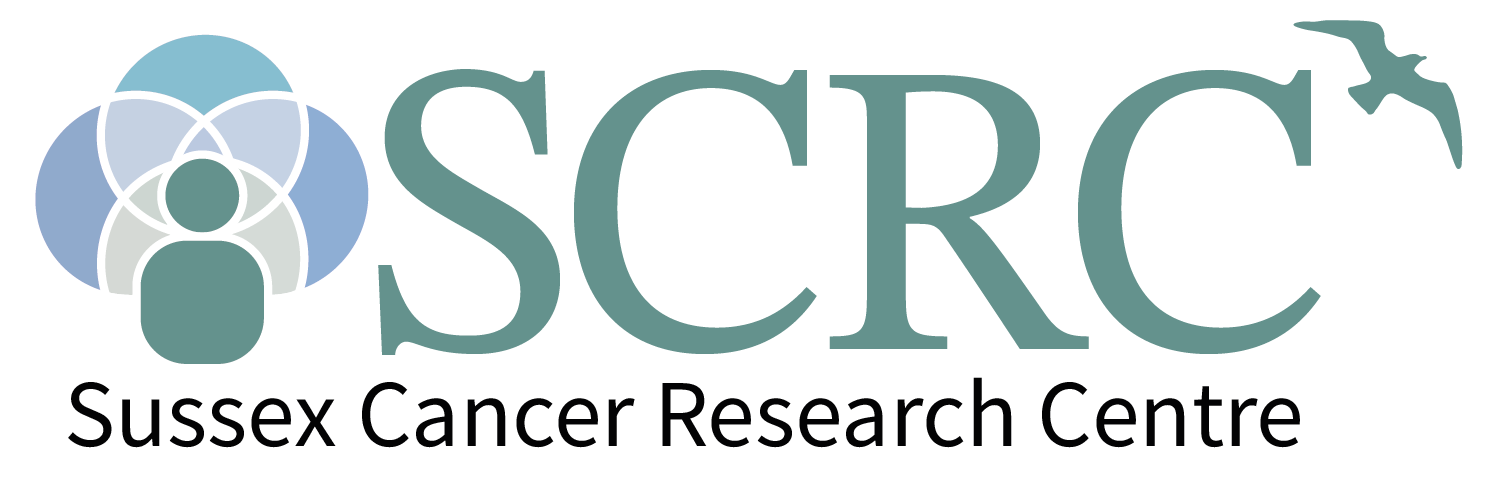
Thanks to the generous support of The Sussex Cancer Fund, The University of Brighton, Brighton and Sussex Medical School, and the University of Sussex, we have made five awards to kick-start exciting new collaborative research projects across Sussex. These diverse research projects span from bench to bedside and all share the potential to unlock new treatment approaches for multiple cancer types.
The SCRC sat down with Fabio Simoes to talk about his project.
SCRC: Can you share a brief overview of your project?
FS: Our project focuses on creating better models to test new treatments that could help overcome drug resistance in diffuse large B-cell lymphoma (DLBCL), the most common type of blood cancer. Although some treatments, like Bcl-2 inhibitors (e.g. venetoclax), have worked well in other cancers, they have been less effective in DLBCL because the tumour microenvironment (TME)—the surrounding cells that support the tumour—helps cancer cells resist treatment. PhD student Aimilia Vareli found in lab experiments that blocking a protein called NF-κB-inducing kinase (NIK) can make venetoclax work again, pointing to a promising new treatment strategy.
To test this approach in a way that better reflects real patients, we are developing humanised mouse models that more accurately mimic the human immune system and how it interacts with DLBCL. Our pilot project has three main goals:
1. Creating a human-like immune system in mice – We will introduce human blood stem cells into specialised mice so they can develop human immune cells like B cells, T cells, and macrophages, which play a role in cancer growth and treatment resistance.
2. Growing DLBCL tumours in these humanised mice – By implanting them with DLBCL cells, we mimic how the TME influences drug resistance.
3. Testing the combination of venetoclax and NIK inhibitors – We will treat the mice with this drug combination to check if it is safe.
By using more realistic models, this research will help us better understand how DLBCL resists treatment and fast-track the development of better therapies for patients who do not respond to current treatments.
SCRC: What was the inspiration for your project?
FS: It is well known that interactions between tumours and their surrounding environment play a major role in drug resistance. However, most pre-clinical models fail to accurately capture these interactions, which contributes to the high failure rate of cancer drugs in clinical trials - over 80% of treatments that show promise in mice do not translate to patient success.
We wanted to tackle this challenge by developing more advanced models that incorporate a human-like immune system, allowing us to better study how the tumour microenvironment (TME) influences drug resistance. By creating a more realistic setting, we can improve the way we test potential treatments and increase the chances of clinical success.
This pilot study lays the groundwork for a larger project, where we will test a promising drug combination (NIK inhibitor + venetoclax) to see if it can overcome TME-driven resistance and lead to better treatment options for patients with diffuse large B-cell lymphoma (DLBCL).
SCRC: How do you foresee your project leading to patient benefit? And when?
FS: Our project aims to improve treatment for DLBCL patients who do not respond to standard therapies, tackling TME-driven drug resistance—a major challenge in blood cancers. By developing humanised mouse models that better replicate the human immune system, we can:
1. Test a promising drug combination (venetoclax + NIK inhibitor) shown to reverse resistance in lab studies.
2. Improve pre-clinical drug testing, reducing the failure rate of treatments in clinical trials.
3. Create a model applicable to other blood cancers, including acute myeloid leukaemia (AML) and chronic lymphocytic leukaemia (CLL), where TME interactions also drive resistance.
While this is an early-stage preclinical study, establishing this model will enable the testing of various treatment strategies currently being developed by our collaborative blood cancer teams. If successful, some therapies - particularly those repurposing drugs already in clinical use - could impact patients within 5 years, while novel compounds may take up to 10 years to reach clinical application.
SCRC: If the project is successful—what’s next?
FS: This initial study will provide proof-of-principle data, demonstrating our ability to establish and utilise this advanced humanised model for studying tumour-microenvironment interactions. It will also confirm that the novel drug combination (NIK inhibitor + venetoclax) can be administered safely.
Next, we will use this data to secure additional funding for pre-clinical efficacy testing of this combination therapy in DLBCL. Additionally, the validated model will support applications to test candidate therapies for other blood cancers, such as AML and CLL, expanding its impact beyond DLBCL and contributing to the development of more effective, personalised treatments.
SCRC: Can you describe any interdisciplinary aspects of your projects?
FS: This project directly aligns with the Sussex Cancer Research Centre’s (SCRC) mission of fostering multi-institutional, translational research aimed at improving patient outcomes. Through our collaboration with Dr. John Jones and Dr Eleni Ladikou at East Sussex Healthcare NHS Trust, we gain crucial access to patient samples, strengthening ties between BSMS and clinical institutions.
SCRC: What do you think are the main challenges we face in cancer research? How does your project help to address this?
FS: Two major challenges in cancer research are drug resistance and low-fidelity pre-clinical models that fail to accurately predict patient responses.
Drug Resistance: Many cancers, including DLBCL, AML, and CLL, develop resistance to treatment due to interactions with the tumour microenvironment (TME). In DLBCL, resistance to Bcl-2 inhibitors like venetoclax is driven by NF-κB activation in the TME, reducing drug effectiveness. Our project addresses this by establishing a humanised model to test a combination therapy (venetoclax + NIK inhibitor), which has shown promise in reversing resistance in lab studies.
Poor Pre-Clinical Models: Traditional mouse models lack a functional immune system, making it difficult to study how the TME influences tumour progression and drug resistance. Many treatments that succeed in mice fail in human trials because these models do not fully capture human tumour-immune interactions. Our project tackles this by developing humanised mouse models, in which we first generate a human-like immune system before engrafting DLBCL cell lines or patient-derived samples. This approach provides a more accurate platform for testing therapies, improving the likelihood of clinical success.
By addressing these challenges, our project aims to enhance drug testing, accelerate treatment development, and improve outcomes for patients with blood cancers.
SCRC: How have research mentors benefited your research?
FS: As someone new to blood cancer research, mentorship has been essential in guiding my transition into the field. While I bring over a decade of experience developing animal models for diseases like motor neuron disease and osteoarthritis, applying these skills to leukaemia and the tumour microenvironment requires expertise from established researchers.
SCRC: If people want to follow you and your team or get updates as the project progresses, where can they get more info?
FS: Lab website: www.simoes.science
Twitter: @DrFabioSimoes
Bluesky: @simoes.science
Support life-changing research
Your support has an enormous impact on our research, transforming what we are able to do. Together we have the potential to transform the lives of cancer patients. With your support we are working to discover cutting-edge treatment approaches, that are both kinder and more effective.
We have parntered with the Sussex Cancer Fund to ensure your donations support life-changing research here in Sussex.
If you want to discuss your donation contact us.


